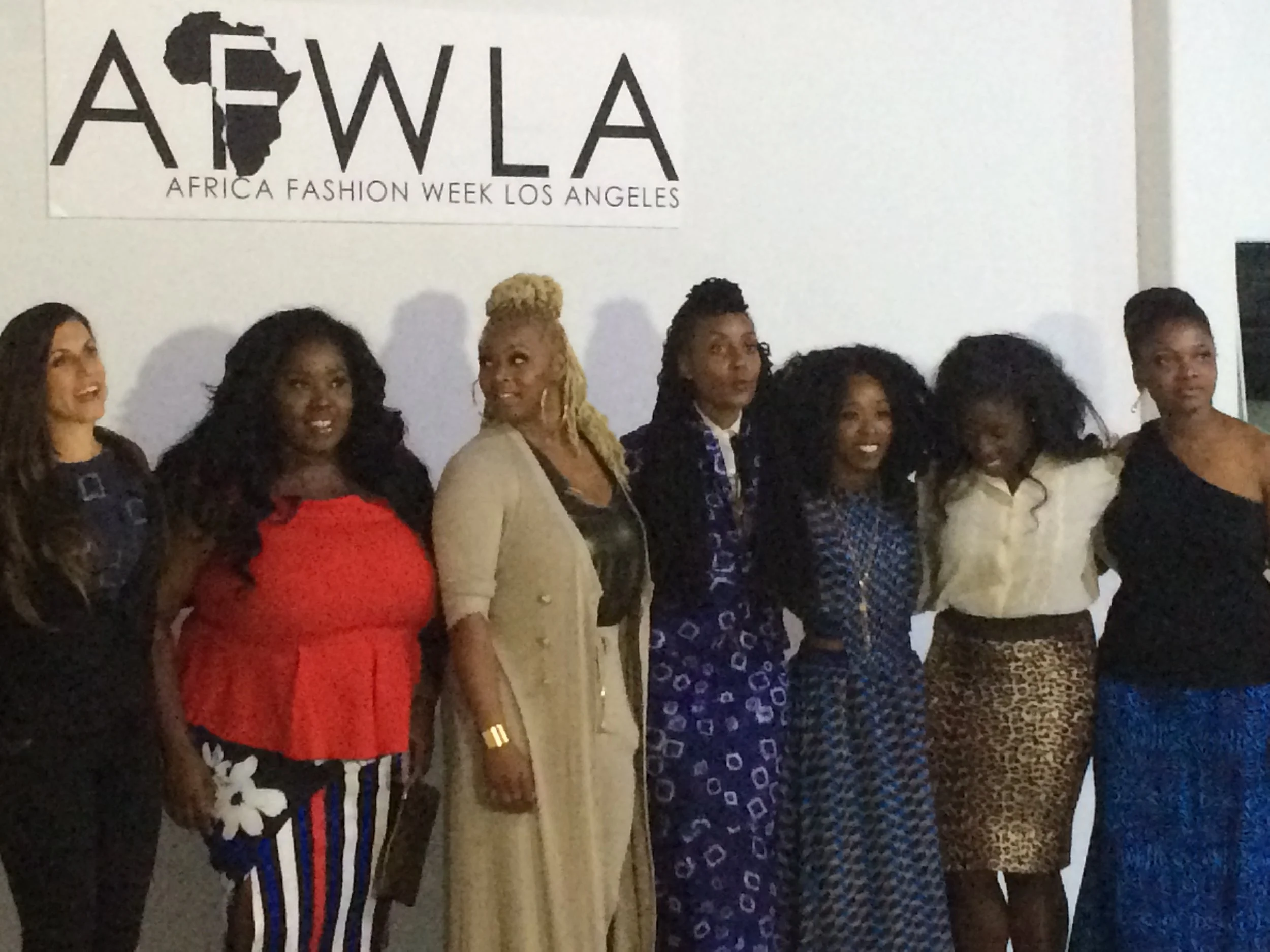The amazing Africa Fashion Week Los Angeles (AFWLA), produced by Continent Creative, Los Angeles’ leading producer and marketer of upscale African fashion, art, and lifestyle events, took place this past Thursday, October 20th through Saturday, October 22nd at the Playhouse Studios in Los Angeles, California. The fashions were spectacular, the talent was tremendous, and the messages were resounding! The message that resounded most during my AFWLA experience was: the lack of African designers and styles within the mainstream market.
Watching the spectacular creations of Seju Mike’s Osengwa collection, Maryanne Enanga Mokoko’s Koko Nanga line, Ngozika O’keke’s collection, Josefa Da Silva’s designs, and Corey Harris and Linda Omeni’s MIDGETgiraffe line float down the runway during AFWLA’s runway shows, I could not fathom this mainstream market lack.
According to Ayanna James, celebrity stylist and costume designer, the solution to the lack of African designers and styles within the mainstream market lies within the many African creatives within the diaspora. She eloquently stated during a TED-style talk on the first night of AFWLA that, “Africa produced top tier fashion designers and are being ripped off and cut out of the conversation. How do we fix this - we are the ones we have been waiting for, and no one else can save us. We have to carve out market opportunities for ourselves.”
All of the amazing fashion designers listed above are indeed carving out mainstream market opportunities for themselves! Ngozika O’keke’s designs can be bought on Etsy, Josefa Da Silva has opened her own boutique and showroom in Boston, Massachusetts, and you can purchase both MIDGETgiraffe and Koko Nanga’s designs directly from their websites.
We still, however, have a long way to go in creating markets for African designers and creatives in the United States, Europe, etc. to make greater Africa known. Tina Tangalakis, founder of the Della fashion line, a socially responsible line handcrafted by a community in Ghana, suggests that African designers and creatives have good branding, so that people have faith in what they are selling, and the ability to, “fake it until you make it,” to help create a presence within mainstream markets. I agree with both Tina and Ayanna, and elements of their advice and suggestions will be woven into FRJ’s programming. After all, FRJ will be contributing to the training and education of many future African designers and creatives!
Do YOU want to help usher more African designers and creatives into the mainstream market? If so, please support the African designers and creatives of AFWLA and support FRJ!
By: Chanell Hasty, Founder and President

